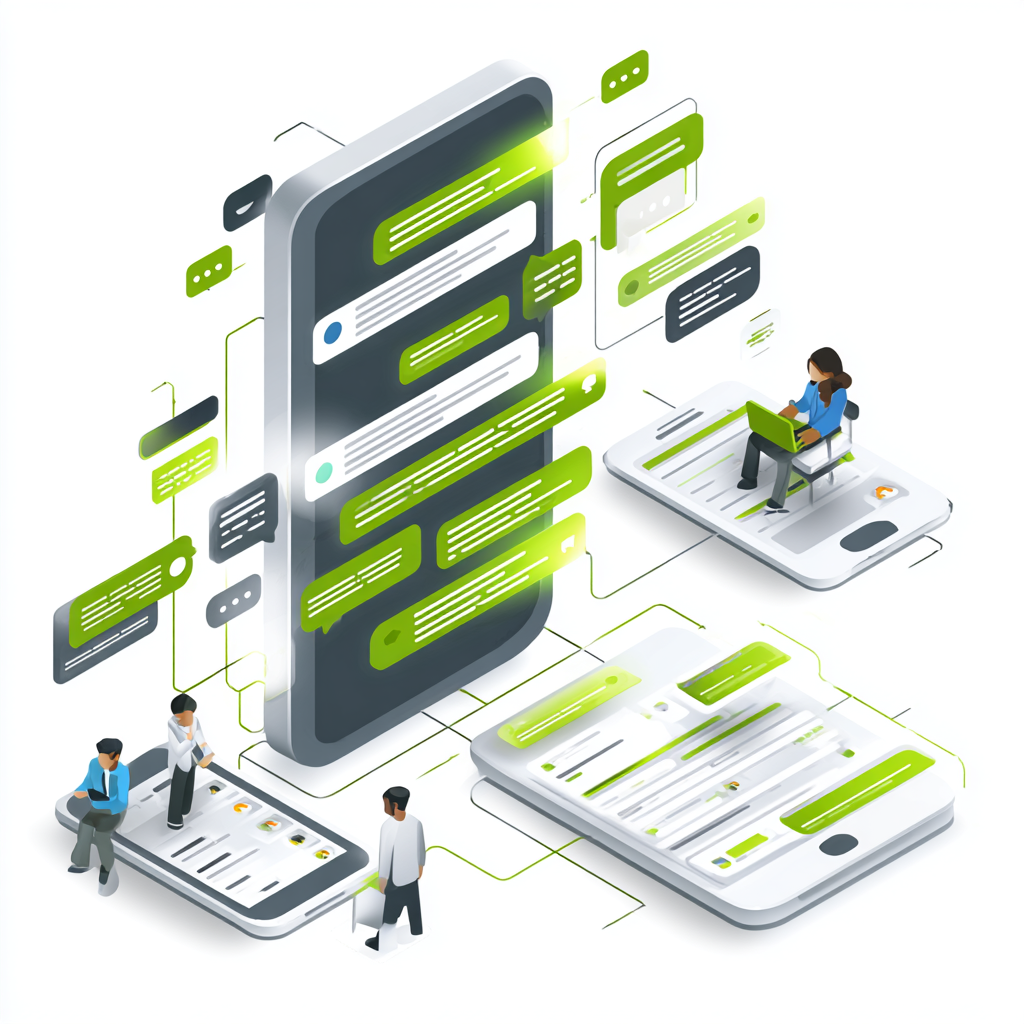Customer experience strategy is a critical driver of business success. Studies show companies prioritizing CX can boost revenue by 4% to 8% above market averages. It demonstrates the significant impact of a well-executed CX strategy. A well-defined customer experience strategy serves as the essential roadmap. But what does a customer experience strategy look like in practice? Let us explore the key components that constitute a strong CX strategy.
Understanding the core of a customer experience strategy
A customer experience strategy is a comprehensive plan that outlines how a business will deliver consistent, positive, and memorable interactions across all touchpoints in the customer journey. It is not just about addressing customer service issues but also about proactively designing experiences that exceed expectations.
Key components of a good customer experience strategy:
The key components of a good customer experience strategy include:
1. Customer persona development: Know your audience
A customer persona represents your ideal customer based on research and data. Without understanding your audience, it is impossible to deliver a personalized experience.
- Define customer segments: Identify common characteristics among your customers.
- Include key details: Demographics (age, gender, income), psychographics (preferences, values, pain points), and buying behavior.
- Use real data: Gather insights from customer surveys, social media analytics, and CRM systems. By developing accurate personas, businesses can create tailored marketing strategies and customer interactions that resonate with their audience.
2. Mapping the customer journey: Identify gaps and pain points
A customer journey map visualizes every interaction with your brand from the moment they discover your business to post-purchase engagement.
- Identify key touchpoints: Website visits, social media interactions, customer support calls, and in-store experiences.
- Analyze customer pain points: Where do customers face obstacles? Long wait times? Confusing checkout processes?
- Optimize the experience: Use customer feedback to remove friction and enhance satisfaction. Businesses that map their customer journey better understand their audience’s needs, leading to improved engagement and retention.
3. Defining your CX vision and goals: Set measurable targets
A CX strategy needs a clear vision and measurable objectives to guide decision-making. Ask yourself:
- What kind of experience do you want customers to have?
- What are your business goals for CX?
- How will you measure success?
Common CX metrics
Common CX metrics include:
- Customer satisfaction score (CSAT): Measures customer happiness with a product or service.
- Net promoter score (NPS): Assesses customer loyalty by asking how likely they are to recommend your brand.
- Customer retention rate: Tracks how many customers continue doing business with you. Defining specific, measurable, and achievable goals helps businesses stay focused and continuously improve CX efforts.
4. Implementing a customer-centric culture: Empower employees
A customer experience strategy is not just about technology and processes but also about people. Employees are the frontline ambassadors of your brand, and their engagement directly impacts customer satisfaction. When employees feel empowered, valued, and well-trained, they are more likely to provide exceptional service that enhances the overall experience. Here is how businesses can foster a customer-centric culture:
i.) Train your team: Ensure employees understand their role: They should clearly understand their role in delivering great customer experiences. Comprehensive training programs should focus on:
- Customer empathy: Teaching employees to put themselves in the customer’s shoes.
- Active listening skills: Helping employees respond effectively to customer needs.
- Product and service knowledge: Ensuring staff can confidently assist customers.
Training should be ongoing, not a one-time event. Regular workshops, coaching sessions, and real-world case studies help reinforce CX principles and motivate employees.
ii.) Empower decision-making: Enable frontline employees to solve issues: Customers expect quick resolutions to their problems. If employees must escalate minor issues up the chain of command, it can cause frustration and delays. Instead, businesses should:
- Give employees the authority to resolve common complaints without waiting for managerial approval.
- Provide clear guidelines and autonomy to handle customer concerns confidently.
- Trust employees to make judgment calls that prioritize customer satisfaction.
When employees feel empowered, they become more engaged, leading to faster problem resolution and happier customers.
iii.) Create a CX-first culture: Align values and reward excellent service: A customer-centric culture must be ingrained in the company’s values. Leadership should:
- Encourage employee feedback: Create open communication channels to share CX insights.
- Recognize and reward outstanding service through bonuses, incentives, or employee spotlights.
- Lead by example: When managers prioritize customer experience, employees are more likely to follow suit.
Companies like Zappos and Ritz-Carlton are known for their customer-first mindset, empowering employees to go above and beyond to delight customers. By fostering a culture where employees take ownership of CX, businesses can create a more loyal and satisfied customer base.
5. Leveraging technology and data: Use insights to improve CX
Technology enables businesses to personalize experiences and make data-driven improvements.
i.) CRM systems: Track and understand customer interactions: A Customer Relationship Management (CRM) system is a powerful tool that helps businesses store and analyze customer data, including:
- Past interactions (emails, calls, chats)
- Purchase history and product preferences
- Behavioral patterns (e.g., frequency of purchases, preferred communication channels)
By centralizing this information, businesses can:
- Personalize communications based on customer interests.
- Predict future needs and recommend relevant products or services.
- Improve follow-ups by ensuring customer inquiries are handled efficiently.
ii.) AI & Chatbots: Provide instant support and automate tasks
Artificial Intelligence (AI) and chatbots allow businesses to provide real-time support, ensuring that customers receive quick and accurate responses 24/7. AI-powered tools can:
- Handle common customer inquiries, reducing wait times.
- Guide customers through troubleshooting steps without needing a human agent.
- Analyze past conversations to improve responses and predict customer concerns.
For example, AI-driven chatbots can automatically suggest relevant products or proactively address potential issues, improving overall satisfaction.
iii.) Analytics tools: Identify Trends and Improve Decision-Making
Customer data is only valuable if businesses can interpret it and take action. Advanced analytics tools help companies:
- Spot emerging trends in customer preferences.
- Identify potential pain points and areas of dissatisfaction.
- Measure the effectiveness of marketing campaigns and customer engagement efforts.
By continuously analyzing customer behavior, businesses can adjust their strategies and refine their CX approach to deliver better, more tailored experiences.
iv.) Omnichannel platforms: Ensure a seamless experience across channels
Customers today interact with brands through multiple touchpoints, websites, social media, SMS, email, and even in-store visits. An omnichannel strategy ensures a consistent and seamless experience by:
- Synchronizing customer data across all platforms so customers don’t have to repeat themselves.
- Providing a unified experience, whether a customer reaches out via email, live chat, or phone.
- By allowing smooth transitions between channels, customers should be able to start a conversation on one platform and continue it on another without disruptions.
How Arkesel can help
Arkesel’s SMS and email marketing tools allow businesses to:
- Personalize customer communications based on preferences.
- Gather real-time customer feedback through surveys.
- Automate follow-ups and notifications, ensuring customers stay engaged.
With the right technology and data-driven insights, businesses can enhance customer relationships, streamline processes, and ultimately drive long-term success.
6. Establishing feedback loops: Listen, adapt, and improve
Customer feedback is a goldmine for improving CX. Companies should actively gather and analyze feedback to refine their strategy.
- Use surveys & reviews: Gather insights via post-purchase surveys, NPS polls, and online reviews.
- Monitor social media: Track customer sentiment and respond promptly.
- Make data-driven adjustments: Use insights to address pain points and enhance the customer journey.
Use Arkesel’s SMS platform to send quick customer feedback surveys and analyze real-time responses.
7. Ensuring omnichannel consistency: Seamless experience across all channels
Customers expect a smooth experience whether they interact with your brand online, in-store, or via customer service.
- Ensure consistency: Branding, messaging, and support should be uniform across channels.
- Enable channel switching: Customers should be able to start a conversation on one channel and continue it on another without repeating themselves.
- Utilize omnichannel tools: Platforms like Arkesel’s unified communication system help businesses manage interactions seamlessly. A consistent omnichannel experience boosts customer satisfaction and loyalty, making it easier to retain customers.
Why a customer experience strategy matters
What a successful customer experience strategy achieves:
- Increased customer loyalty: Happy customers are more likely to become repeat buyers and brand advocates.
- Reduced customer churn: A positive experience minimizes the likelihood of customers switching to competitors.
- Enhanced brand reputation: Excellent CX leads to positive word-of-mouth and online reviews.
- Increased revenue and profitability: Loyal customers spend more and contribute to long-term business growth.
- Improved employee morale: When employees see the positive impact of their work on customers, they are more engaged.
- Better customer insights: A well-executed customer experience strategy provides valuable data on customer behavior, preferences, and pain points, helping businesses make informed decisions and refine their offerings.
Build a sustainable CX strategy for long-term success
A well-crafted customer experience strategy is essential for businesses seeking to thrive in today’s customer-centric environment. By understanding your customers, mapping their journeys, and implementing a customer-focused culture, you can create exceptional experiences that drive loyalty, growth, and long-term success. Remember that customer experience is an ongoing process that requires continuous monitoring, adaptation, and improvement. By prioritizing your customers and utilizing tools like Arkesel’s communication platform, you can build a sustainable and profitable business.





